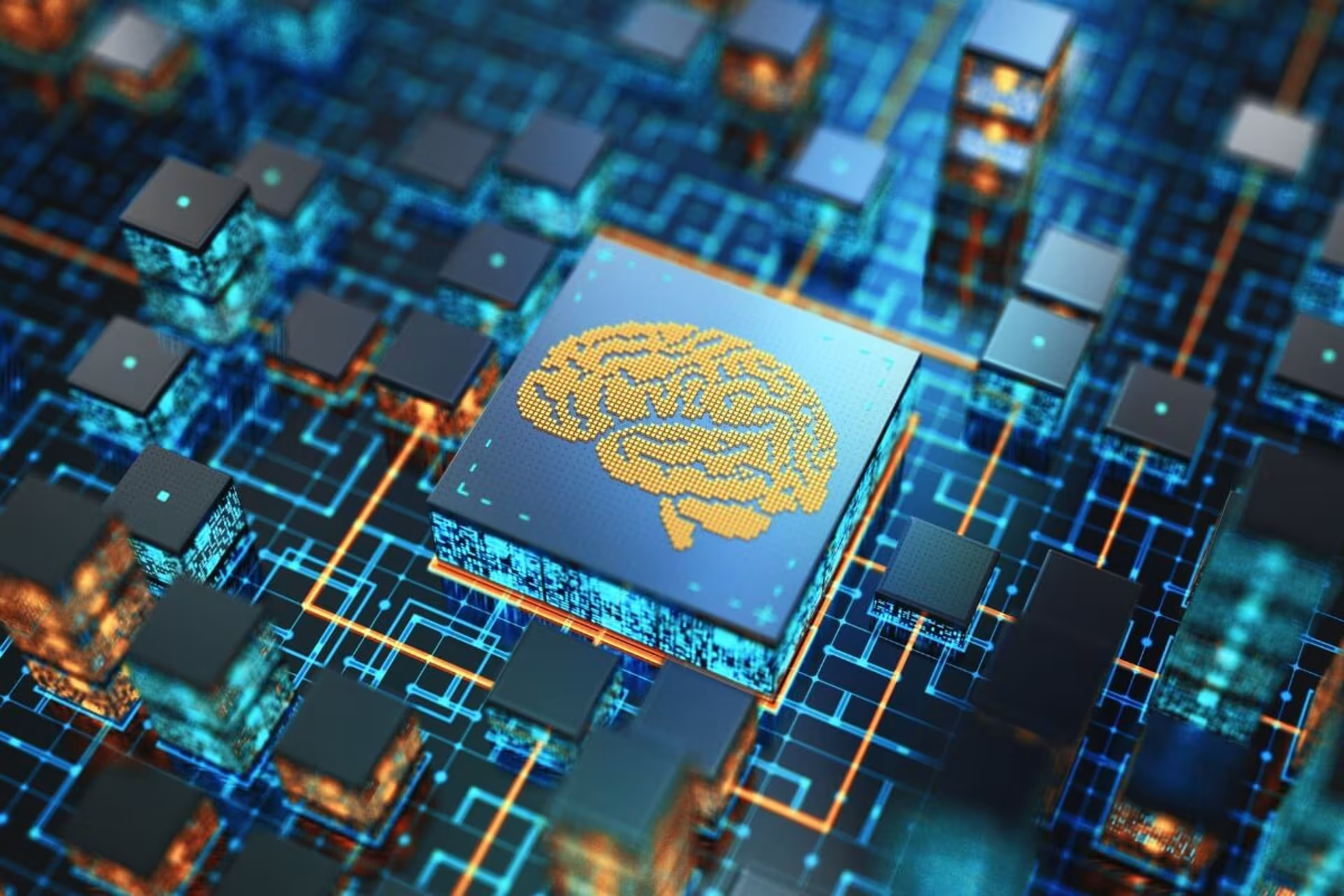The fast world of software development is redefining how organizations ensure quality through Artificial intelligence (AI) for software testing. Traditional methods of testing will generally fail to keep up with the speed of development. AI comes in to curb challenges of efficiency, accuracy, and speed in testing. This article explores how AI can automate bug prevention, enhance testing, and support faster release of software.
Understanding AI in Software Testing
AI in software testing improves software evaluation using Machine Learning (ML), Natural Language Processing (NLP), and data analytics. It allows for the automation of many mundane tasks, making predictions about possible defects, and dynamically adjusting to the change in the application landscape. Therefore, it enables testers to only concentrate on complex scenarios that bring better quality of the software in the end.
Key Benefits of AI in Software Testing
The following are the key benefits of AI in software testing:
- Enhanced Efficiency
Automates tasks like test case generation and execution, significantly reducing overall testing time and associated costs. This frees up human testers to focus on higher-level strategic activities.
- Improved Accuracy
Minimizes human error by consistently applying the same logic and criteria, leading to more reliable and consistent test results. This results in a reduced number of bugs slipping into production.
- Proactive Issue Detection
Foresee probable defects by inspecting time trends and the source code change before it comes to affect actual production, such that it leads to early interventions that will in turn reduce further costs to remedy later.
- Automatic Test Maintenance
The tests can be updated automatically when any changes are encountered with the applications and thereby ensure reducing manual tests; it continues to be relevant or even effective within its applications.
- Better Test Coverage
Executes tests across different environments, such as different browsers, Operating Systems (OSs), and devices, thereby ensuring maximum compatibility. This provides comprehensive test coverage and enhances the User Experience (UX) across platforms.
- Continuous Testing Support
It easily integrates with Continuous Integration and Continuous Delivery (CI/CD) pipelines for rapid feedback and enables continuous testing practices. This fosters a more agile development environment with faster release cycles.
How AI Helps in Automation Testing?
By using these ML technologies, data analytics, and NLP, automation testing through AI will effectively reduce errors by streamlining more processes, increasing adaptability within the changes implemented in software development, and even producing more efficient testing.
AI-Driven Testing Aspects
Here are the testing aspects related to AI:
- Test Case Generation
AI algorithms automatically create new test cases from existing data, application behavior, and requirements. This significantly reduces the time and effort required for manual test case design.
- Test Execution
AI runs tests across multiple environments simultaneously, providing comprehensive coverage and faster feedback. This identifies compatibility issues early in the development cycle.
- Defect Prediction
ML models predict defects based on historical data, code changes, and past bug reports. This allows developers to proactively address potential issues before they impact production.
- Test Maintenance
AI tools automatically update tests when applications change, thus saving manual effort and keeping the tests relevant. This maintains stable automation suites.
- NLP
AI interprets requirements written in plain language and converts them into executable test scripts. This makes the test design process simple and aligns testing with organizational needs.
- Anomaly Detection
AI analyzes test results to identify unexpected behavior, deviations, and potential issues. This enables early detection of anomalies for improved system stability.
- Performance Testing
AI monitors performance and simulates user behavior to optimize application performance and identify bottlenecks. This helps ensure a seamless UX even under heavy load.
- Continuous Testing
AI integrates with CI/CD pipelines to support rapid feedback and continuous validation. This fosters faster development cycles and ensures continuous quality improvements.
AI Automation Testing Use Cases
AI transforms automation testing through various applications, enhancing the effectiveness of testing and improving software quality.
- Predictive Analytics
Analyzes historical data to predict where defects are likely, so the testing process focuses on those areas. This proactive approach leads to more efficient resource allocation and early defect detection.
- Intelligent Test Prioritization
Prioritizes tests based on defect likelihood and impact, ensuring critical tests are executed first. This optimizes resource utilization and delivers faster feedback on the most important features.
- Self-Healing Test Automation
Automatically adapts to changes in the application, updating tests without human intervention and ensuring test stability. This significantly reduces test maintenance efforts and ensures continued validation.
- Requirements-Based Testing
Uses NLP to understand requirements and generate test cases, simplifying the test design process. This ensures comprehensive test coverage and better alignment with business objectives.
- Impact Analysis
Analyzes code changes to determine which tests need to be rerun, saving time and resources. This ensures regression testing is focused and efficient, preventing new code from breaking existing functionality.
- Performance Optimization
Monitors performance and simulates user behavior to optimize application performance and scalability. This helps deliver a seamless user experience even under high-traffic conditions.
How to Automate Bugs Before They Happen
AI enhances bug prevention by spotting patterns in code changes and predicting where bugs are most likely to appear. By analyzing historical data, AI algorithms identify potential defects early in the development process. This proactive strategy improves software quality and reliability, cutting development time and costs.
AI uses predictive models, including statistical, ML, and hybrid models, to analyze historical data and identify trends and correlations that may indicate potential bugs, with ML models adapting to new data and enhancing accuracy over time.
AI-powered tools analyze code patterns, execution paths, and historical data to predict where bugs are likely to occur. Comprehensive datasets including historical bug reports, code changes, and relevant metrics are leveraged.
By utilizing historical defect datasets, code version management system data, software development workflow data, codebases, and upcoming release scopes, potential bugs can be predicted for specific releases.
AI enables developers to address issues proactively, reducing time spent on bug fixing and improving software quality, leading to faster release cycles and more reliable software.
Early bug detection minimizes the impact on the development timeline, as issues are resolved before becoming deeply embedded in the code. Frameworks leveraging machine learning offer real-time feedback to developers and seamlessly integrate into their workflows, allowing developers to promptly address issues during development, reducing the likelihood of bugs persisting in the final product.
AI’s capability extends beyond prediction, offering insights to facilitate effective prevention strategies. By analyzing code complexity, user behavior, and historical defect patterns, AI helps teams prioritize testing efforts in high-risk areas. By classifying defects to a particular module or package, targeted effort can be shifted to mitigate the risks of future errors.
Integrating AI into Your Testing Process
To effectively use AI in software testing, organizations should follow a structured approach. Here are the steps for AI integration, expanded for clarity:
- Define Clear Goals
Determine what you want to achieve with AI in testing. Identify specific objectives, such as automating tedious processes, enhancing test coverage, improving accuracy, or reducing costs. Having clear goals helps in selecting the right AI tools and measuring the success of the integration.
- Assess Current Processes
Analyze your current testing processes to look for strengths, weaknesses, and areas that require this integration. Understand the testing framework, methodologies, and practices in the organization. This assessment helps align testing efforts with organizational objectives and industry best practices.
- Choose the Right Tools
Select AI-powered tools and technologies that align with your needs to ensure compatibility with your current testing infrastructure or plan a gradual implementation to complement existing processes, considering factors such as integration capabilities, ease of use, and scalability.
- Train Your Team
Provide comprehensive training to your testing team on how to use the new AI tools effectively. Ensure they understand how to interpret the results. Involve AI experts for accurate training, and test the AI algorithm to ensure it’s accurate and efficient.
- Start Small
Begin with pilot projects to test AI capabilities in a controlled environment. Introduce AI for tasks like test case generation. This approach allows you to assess feasibility and effectiveness without disrupting the entire testing process.
- Monitor and Optimize
Continuously monitor AI-generated results and update models regularly. AI adapts based on new testing results, continuously improving and reducing errors. With AI-driven test result analysis, teams can understand software performance in real time and predict potential issues before they affect the user experience.
Open-Source AI Testing Tools
Several open-source tools can help organizations implement AI in their testing processes.
- Selenium: A popular framework for automating web browsers.
- Appium: An open-source tool for mobile app testing.
- JMeter: Used for performance testing.
These tools can be integrated with AI algorithms to enhance their capabilities and automate more complex testing tasks.
Cloud Testing With AI to Automate Bugs Before They Happen
Cloud testing, enhanced with AI, offers a scalable and flexible environment for automating the detection of bugs before they impact production. This will help organizations take full advantage of devices and configurations with cloud platforms by providing adequate coverage in tests but still ensuring the smooth running of complicated AI algorithms.
Implementing AI into testing on the cloud helps to achieve quality in the software while streamlining strategic task focus for the teams. AI will bring better automation in testing due to increased efficiency and accuracy, more proactive issues identified, dynamic maintenance of the tests, and overall test coverage through continuous testing.
LambdaTest is a cloud-based testing platform where developers and testers can execute automated and manual testing on numerous browser and OS combinations. More than 3000 real mobile and desktop browsers are available online with scalable, secure, and reliable automation cloud.
LambdaTest supports cross-browser testing, real-time testing, automated Selenium testing, and integration with CI/CD tools. This ensures that applications work perfectly in all browsers and versions, thereby improving workflow efficiency and ensuring a uniform user experience.
Cloud-based testing AI from LambdaTest brings benefits like cost efficiency, scalability, accessibility, time savings, and global access. Leveraging machine learning, data analytics, and natural language processing, cloud-based AI testing streamlines the testing process, reduces human error, and adapts to changes in software development. AI algorithms analyze existing test cases and application behavior to automatically generate new test cases.
Moreover, AI can run tests across multiple environments simultaneously, adapting to different configurations and settings, increasing testing speed and coverage. ML models predict potential defects based on historical data and code changes, enabling proactive identification of issues before release.
Challenges and Considerations
While AI offers many benefits, there are challenges to consider when implementing it in software testing.
- Data Requirements: AI algorithms need large amounts of data.
- Skill Gap: Expertise in AI and ML is required.
- Integration Complexity: Integrating AI tools with existing systems can be complex.
- Maintenance Overhead: AI models need ongoing maintenance and updates.
- Ethical Considerations: Bias in data can lead to unfair testing outcomes.
Organizations should carefully evaluate these challenges and develop strategies to address them.
Best Practices for Implementing AI in Software Testing
To maximize the benefits of AI in software testing, follow these best practices.
- Start with a clearly defined strategy based on goals where AI will fit in.
- Go for specific, targeted applications involving AI.
- Collect high-quality data to train an AI model.
- Educate your team and train them appropriately on AI-related tools and methodologies.
- Assess the performance and effectiveness of using AI tools for testing.
- Bring testers and experts together to engage in collaboration to develop the solutions.
By following these practices, organizations can successfully integrate AI into their software testing processes.
Future of AI in Software Testing
AI will keep changing and developing, and its role in software testing will be more crucial with time. The future AI tools will offer live testing, predictive analytics, and better testing for UX. As AI progresses, it will enable organizations to deliver quality software faster and more efficiently. Emerging trends include the following:
- Real-Time Testing: AI will give instant feedback during development.
- Predictive Analytics: AI will predict defects with more accuracy.
- Enhanced User Experience Testing: AI will simulate user interactions to identify usability issues.
- Autonomous Testing: AI will automate the entire testing lifecycle.
These developments will revolutionize software testing and help organizations remain ahead in a competitive market.
Conclusion
To conclude, AI is bringing changes to the software testing sector by automating repetitive processes, predicting defects, and improving test coverage. Even though there are issues with its benefits, tremendous virtues outweigh the issues.
Organizations can implement AI with the best practices and platforms such as LambdaTest for better, faster, and more reliable software releases. Over time, AI will play a critical role in ensuring quality software and driving innovation.
Keep an eye for more latest news & updates on Bangkok Tribune!



